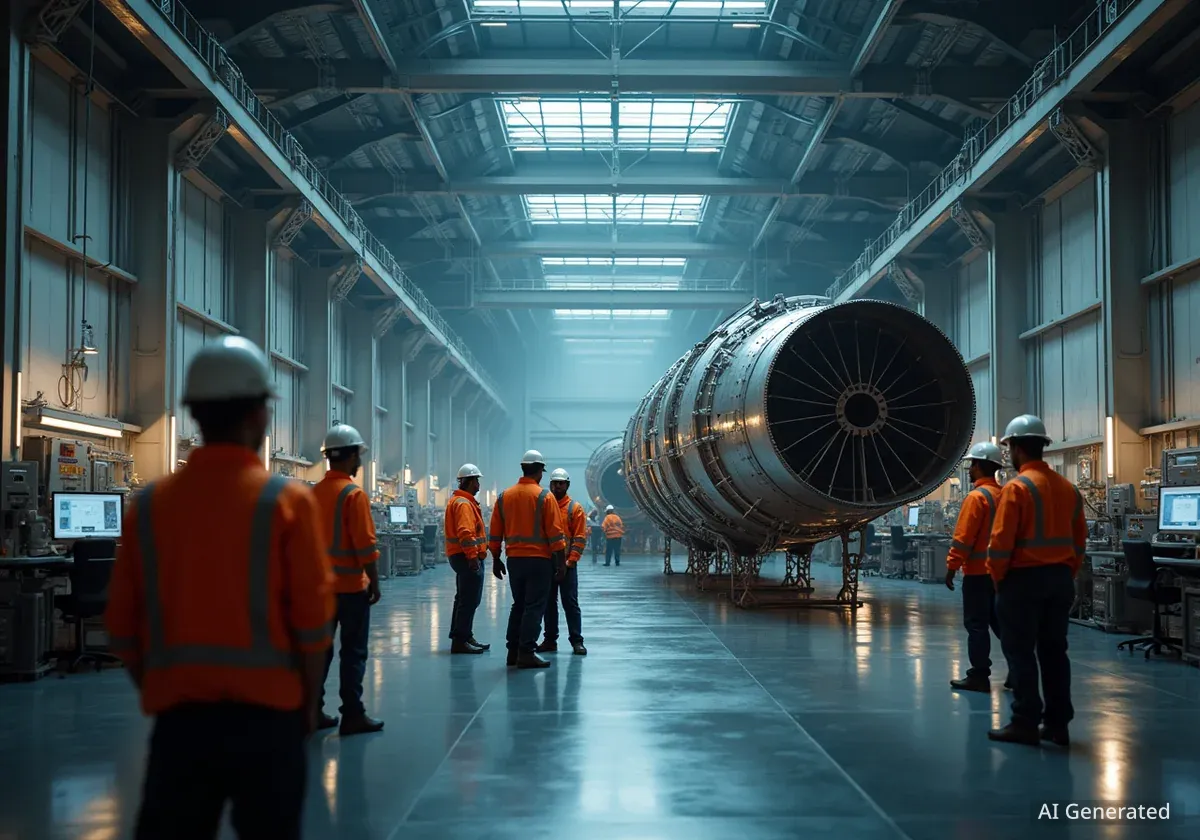In Brunswick, Maine, two new state-of-the-art training facilities have officially opened at Brunswick Landing, aiming to bolster the state's role in the national shipbuilding sector and the expanding global space economy. These centers are designed to address critical workforce shortages and create high-skilled job opportunities within the state.
The Maritime Industrial Workforce Training Center, managed by Maine Maritime Academy, and the SpaceTech Facility, operated by the Maine Space Corporation, represent a significant investment in Maine's industrial future. Both facilities are poised to become central to training the next generation of technicians and innovators.
Key Takeaways
- Two new training centers, one for maritime trades and one for space technology, have opened at Brunswick Landing in Maine.
- The Maritime Industrial Workforce Training Center aims to address a national shortage of tens of thousands of skilled shipbuilders.
- The SpaceTech Facility is designed to help Maine capture a share of the global space economy, projected to reach $1.5 trillion by 2040.
- The initiatives are expected to create new career pathways for Maine's youth and help retain local talent.
Addressing a National Shipbuilding Shortage
The Maritime Industrial Workforce Training Center is tackling a pressing national security issue: a severe lack of skilled tradespeople needed to build and maintain the nation's naval fleet. Located in a repurposed office building, the center is a direct response to this deficit.
Heather Hopkins, the center's director of operations and training, highlighted the scale of the challenge. "We are tens of thousands of people behind to get those ships built and those submarines fixed," she stated. The center's goal is ambitious, with Hopkins adding, "We're hoping to be able to quadruple the number of tradespeople here in Maine."
The facility is already running apprenticeship programs in partnership with major employers like Bath Iron Works, creating a direct pipeline from training to employment. This hands-on approach ensures that graduates have the specific skills required by the defense industry.
Building a Future Workforce
The vision for the maritime center extends to the next generation. Maine Maritime Academy President Craig Johnson emphasized the long-term strategy, which includes plans to accommodate up to 800 high school students from Career and Technical Education (CTE) programs across Maine.
"What that means for Maine’s future and for Maine’s youth are unprecedented opportunities that we haven’t seen before,” Johnson said.
By engaging students early, the center aims to build a sustainable talent pool and showcase viable, high-paying career paths in the maritime trades that do not require a traditional four-year degree.
By the Numbers
- Goal: To quadruple the number of skilled tradespeople in Maine.
- Capacity: Future plans include space for 800 high school CTE students.
- Industry Need: A national deficit of tens of thousands of skilled workers.
Launching Maine into the Space Economy
Just a short distance from the maritime center, the Maine Space Corporation has unveiled its SpaceTech Facility. This innovation hub is designed to position Maine as a key player in the rapidly growing aerospace sector.
The global space economy is projected to expand significantly in the coming decades. Terry Shehata, executive director of the Maine Space Corporation, underscored the importance of this initiative. "The entire global market is going to increase to $1.5 trillion by 2040. Maine needs to be a part of that,” he explained.
The SpaceTech Facility provides local companies and startups with essential resources for testing and developing space-related technologies. Previously, businesses had to seek such facilities out of state, creating a barrier to growth. Now, this infrastructure is available locally, fostering innovation and attracting new ventures.
Retaining Talent with High-Tech Careers
A key objective of the SpaceTech Facility is to create compelling career opportunities that encourage young, talented individuals to remain in Maine. By fostering a local aerospace industry, the state can offer high-tech jobs that were previously unavailable.
This initiative helps counter the trend of "brain drain," where skilled graduates leave the state for better opportunities elsewhere. The presence of a dedicated space technology hub sends a clear signal that Maine is investing in future-focused industries.
A Strategic Location
Brunswick Landing, the site of both new centers, is increasingly recognized for its strategic importance. Once a naval air station, it has been redeveloped into a hub for technology and innovation. Heather Hopkins described it as "a strategic hub that people often don’t realize is crucial for national security," connecting Maine's local workforce efforts to the broader national interest.
A Dual-Pronged Approach to Economic Growth
The establishment of these two distinct yet complementary facilities represents a calculated strategy for Maine's economic development. By investing in both its traditional industrial base—shipbuilding—and a forward-looking sector like aerospace, the state is diversifying its economy and building resilience.
The collaboration between educational institutions like Maine Maritime Academy, state-backed corporations, and private industry partners like Bath Iron Works is a model for targeted workforce development.
These centers are more than just buildings; they are foundational elements of an ecosystem designed to support long-term industrial health. They promise to expand access to well-paying careers, strengthen national security, and secure Maine's position in the economy of tomorrow.





